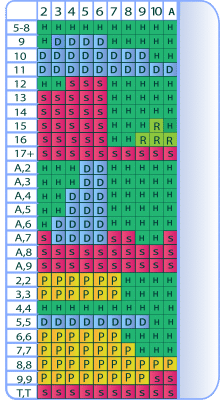Playing Multiple Hands as a Strategy
Playing multiple hands in blackjack can be a double-edged sword. On the upside, this strategy can add excitement, giving seasoned players more opportunities to exploit favorable decks and betting situations. It can also serve as a buffer; if one hand is weak, another might be strong, balancing out the overall risk.
On the downside, multiple hands require a larger bankroll to sustain increased wagering, which can lead to faster depletion of funds if not managed wisely. Additionally, it can complicate decision-making, as each hand must be played individually, potentially diluting the focus and strategic consistency a player maintains with a single hand. Furthermore, it’s a misconception that playing multiple hands will increase overall odds of winning; the house edge remains consistent regardless of how many hands are played.
Popular Betting Systems in Blackjack
Blackjack betting systems are structured methods that players use to adjust their bets based on whether they won or lost the previous hand. These systems can add a level of control, potentially helping to manage the bankroll and mitigate losses. It’s important to note that no betting system can overcome the house edge in the long term, but it can be useful for managing session play.
Martingale
This strategy is a popular yet high-risk betting system. It involves doubling your bet after each loss, with the goal of recouping previous losses and gaining a profit equal to the original bet upon winning. However, it requires a significant bankroll to sustain the potential for multiple consecutive losses, and table limits can also hinder the effectiveness of this strategy.
D’Alembert
The system offers a more cautious approach and is a rather simple blackjack strategy. It suggests increasing your bet by one unit after a loss and decreasing it by one unit after a win. The idea is to recover losses slowly and protect gains as they come, operating under the premise that wins and losses will eventually balance out.
Fibonacci
This involves increasing bets according to the number sequence following a loss and resetting to the beginning after a win. This method is less aggressive than the Martingale but can still lead to higher bets after several losing hands.
1-3-2-6
A positive progression betting strategy that aims to take advantage of winning streaks. The bet amounts follow the pattern of 1x, 3x, 2x, and 6x your initial bet, applied after each consecutive win, and reset after any loss or completing the sequence. It’s designed to maximize gains during streaks while minimizing risks.
Parlay
Another positive progression betting system in blackjack is where you “let it ride.” This strategy involves using your winnings to increase your next bet, similar to compound interest. It can lead to significant profits if you’re on a winning streak, but it requires discipline to avoid giving all the winnings back.
Oscar’s Grind
This strategy is aimed at winning one unit of profit per betting cycle. After each win, the bet is increased by one unit until a loss occurs. Following a loss, the bet remains the same until the next win. The cycle is designed to continue until the player achieves a one-unit profit, then it restarts.
Insurance as a Strategy in Blackjack
Players have the option to take out blackjack insurance when the dealer’s up-card is an ace. This side bet is essentially a wager on whether the dealer has a blackjack, allowing the player to bet up to half of their original bet on this chance. If the dealer does indeed have a blackjack, the insurance bet pays out at 2:1 odds, which can help protect the player’s initial stake. However, if the dealer doesn’t have a blackjack, the player loses the insurance bet, and the game proceeds normally.
The insurance bet is a topic of contention among blackjack enthusiasts; some consider it a prudent defensive strategy that safeguards against a dealer’s potential blackjack, while others view it as a poor bet that increases the house edge and detracts from the overall odds of winning.
From a strategic perspective, the decision to take insurance can depend on the composition of the remaining cards in the deck. Most casual players, though, are often advised against taking insurance, as it requires an additional wager, and the odds don’t favor the player in the long run. The allure of insurance lies in its potential to mitigate a total loss for a particular hand, but the additional cost of the bet can also chip away at a player’s bankroll over time. To opt for insurance is a decision that depends on the player’s preference and how they approach risk in the game of blackjack.










